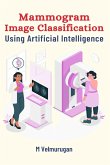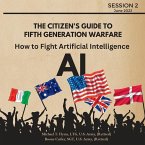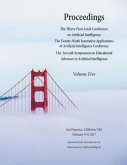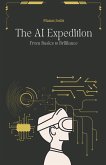The Intersection of Artificial and Multiple Intelligence" is an insightful book that provides a comprehensive understanding of how artificial intelligence (AI) and multiple intelligence (MI) intersect and impact each other. Written by Devang Kaushik Thakar, the book explores the implications of AI's advancement and the way it complements or challenges human intelligence. The book delves into the concept of MI, which refers to the diverse set of cognitive abilities that humans possess, such as linguistic, logical-mathematical, spatial, musical, bodily-kinesthetic, interpersonal, and intrapersonal intelligence. Thakar explores how MI is relevant in the age of AI and how it can be leveraged to enhance AI systems' performance. One of the core themes of the book is the coexistence of AI and human intelligence and how they can complement each other. Thakar provides a clear understanding of the various forms of AI, such as machine learning, deep learning, natural language processing, and computer vision, and how they work. He highlights the limitations of AI and how it falls short of replicating human intelligence. Thakar argues that the synergy of AI and human intelligence can lead to better outcomes and highlights several examples where AI and MI have been used together to achieve superior results. The book also addresses some of the ethical and societal challenges associated with AI's rise. Thakar discusses the potential job losses due to automation and AI and how society can prepare for the future of work. He explores how AI can be biased and how it can perpetuate existing inequalities. Thakar calls for responsible AI development that considers ethical and social implications and ensures that the benefits of AI are shared equitably. In addition to discussing the theoretical aspects of AI and MI, the book provides several practical examples of AI applications in various industries. Thakar provides case studies of how AI is used in healthcare, finance, education, and other sectors. He highlights the benefits of AI in these industries, such as improved diagnosis in healthcare and personalized learning in education. The writing style of the book is engaging and accessible, making it an excellent resource for anyone interested in understanding the intersection of AI and MI. The book is suitable for both technical and non-technical audiences, as Thakar uses a conversational tone and avoids using technical jargon without sacrificing depth and detail. Overall, "The Intersection of Artificial and Multiple Intelligence" is a thought-provoking book that provides a comprehensive understanding of the relationship between AI and human intelligence. Thakar's insights on the implications of AI and how it intersects with MI make it a valuable read for anyone interested in the future of technology and its impact on society.








